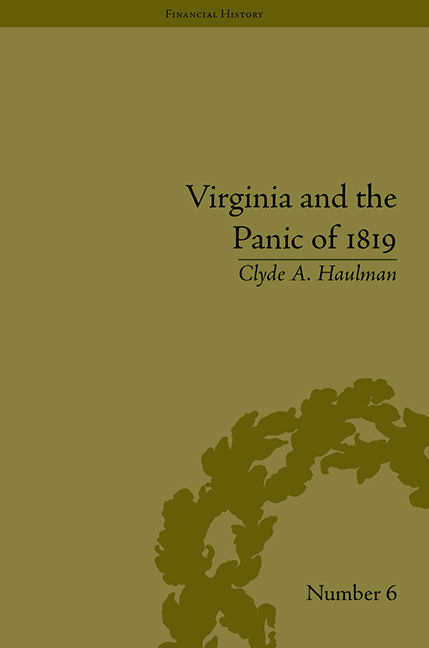Book contents
1 - The Economic Origins of the Panic of 1819
Summary
The year 1815 marked ‘a transitional period in the American economy’ according to the economic historian Douglass C. North. In his pioneering study of the antebellum American economy, The Economic Growth of the United States, 1790–1860, North stated that by the midpoint of the second decade of the century, ‘it was clear that the Atlantic economy and its components were very different from the western world of 1790’. For much of the period between 1790 and 1815 Europe had been at war, and rapid American economic development of the time ‘reflected our ability to take advantage of this war’. In addition, the almost fifty years following the end of the second war with Britain were ones of peace dominated by the tremendous expansion of an Atlantic economy ‘in which artificial national barriers to the free movement of goods, services, productive resources, and ideas were being relaxed’, and in which ‘the “anonymous” impersonal forces of the evolving international market were the basic influences’.
To understand the American economy and the transitions it experienced during the first thirty-five years of the new republic's existence, and in particular to assess the role of the Panic of 1819 in these transitions, it will be helpful to review the nature and process of economic change, domestic and international, in the years between the establishment of the Constitution and the end of the War of 1812. With this background in place, it will be possible to see the economic fortunes of the nation from the view of those who celebrated the Treaty of Ghent in 1815, witnessed the establishment of the Second Bank of the United States in 1816, and experienced the calamity of the Panic of 1819 three years later. It will also enable us to comprehend the nature of the postwar economy and appreciate the complexities faced by the Bank as it attempted to stabilize the monetary system. Finally, this background will help us begin identifying the origins of the Panic of 1819 and evaluating the role of various factors in generating America's first great depression.
- Type
- Chapter
- Information
- Virginia and the Panic of 1819The First Great Depression and the Commonwealth, pp. 7 - 24Publisher: Pickering & ChattoFirst published in: 2014

